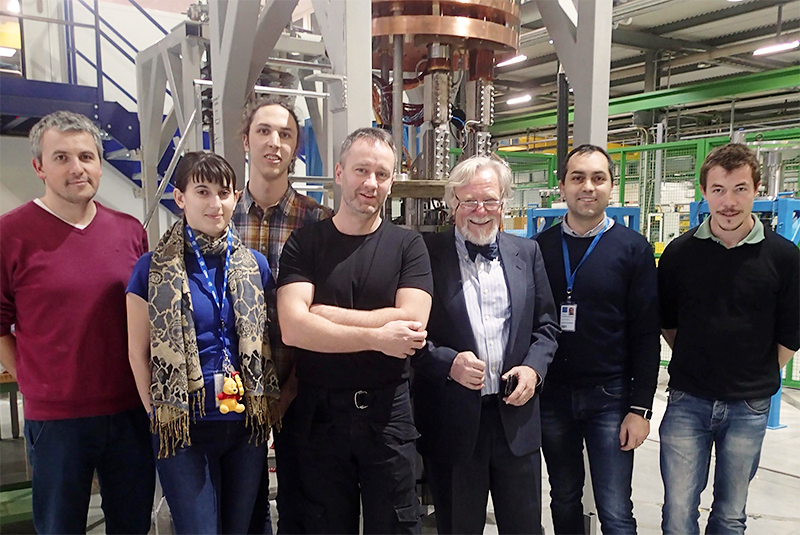![]() SuShi: a Superconducting Shield Septum
SuShi: a Superconducting Shield Septum
by Panos Charitos (CERN)
High-energy colliders have time and again proven their potential for making breakthrough discoveries and exploring some of the biggest questions in physics, the most prominent example being the discovery of the Higgs boson at the LHC in 2013. Given that the time-span from design to construction of an accelerator of this complexity is about 25 years, and to ensure the continuity of CERN's diverse scientific programme, the Future Circular Collider (FCC) Study was launched in 2014 to explore scenarios for post-LHC circular colliders. The unprecedented parameters of this future machine create exciting technological challenges, as it requires novel concepts for many of its key subsystems including the beam injection and extraction.
Given the extremely destructive energy stored in the circulating beams (8.4 GJ, corresponding to the kinetic energy of 24 TGV trains at a speed of 150 km/h), the extraction system is crucial for machine protection, as the beam must be safely disposed in case of any failure, or at the end of an experimental cycle. The extracted beam is first deflected by a fast-pulsed kicker magnet, and then it runs into the high magnetic field region of the static septum magnet, which provides the final, and significant, deflection towards an external beam dump. At the same time this magnet must realize a very low field at the position of the circulating beam. The transition between the two regions must be as thin as possible to reduce the required strength of the upstream kicker system.
A passive superconducting shield can create a zero-field region inside a strong external magnetic field by inducing persistent eddy currents on its surface, automatically arranged in a way to fully cancel the field in its interior (Figure 1).

Figure 1: The SuShi septum principle where the black arrows indicate the shielding currents in the superconductor and the red arrows indicate the magnetic field in the midplane of the device (Image: SuShi/ CERN)
A collaboration between CERN and Wigner Institute for Physics (Budapest, Hungary) was established under the framework of the FCC Study to evaluate the feasibility of this concept in a high-energy accelerator and propose realistic materials and technologies.
Three possible candidates have been selected for the first tests: a bulk MgB2 tube (Figure 2a), a multilayer helically wrapped GdBCO tape on a copper tube (Figure 2b), and a multilayer NbTi/Nb/Cu sheet. The first prototype was successfully tested in February 2017 at CERN's SM18 facility, and could shield 2.6 T at its surface with a wall thickness of 8.5 mm. This is already a factor of about 2.5 improvement over the Lambertson septa of the LHC.
Tests for the two other prototypes are foreseen for later this year. Once the performance of all three prototypes has been evaluated, the best candidate technology will be chosen for more sophisticated tests and further prototyping.
For more information, visit the project website.

Figure 2a: The MgB2 prototype (Image: SuShi/ CERN)

Figure 2b: The HTS prototype (Image: SuShi/ CERN)

Figure 3: The SuShi team during the test of the MgB2 prototype (Image credit: Daniel Barna)
The research group is grateful for the support of the SM18 and the Magnetic Measurements teams, the CERN TE-ABT group and the FCC Study Coordination group.
The research leading to these results has received funding from the European Commission under the FP7 Research Infrastructures project EUCARD-2, grant agreement no. 312453, and the FCC Study group.
